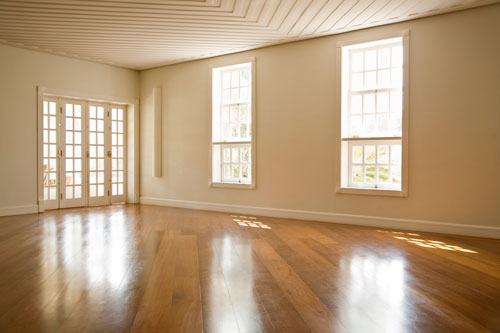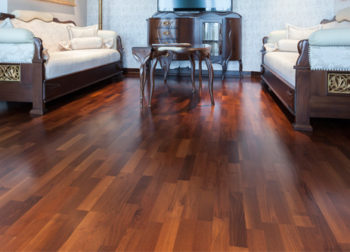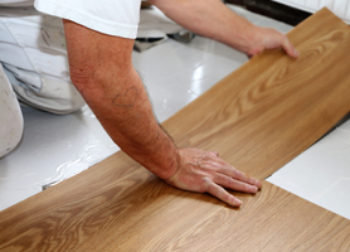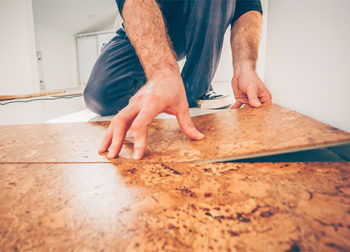
3 Ways to Protect Your Hardwood Flooring From Winter Weather
When the outside world looks like a winter wonderland, the inside of your home can feel a little cozier. Unfortunately, cold weather outside can be exceptionally hard on your hardwood flooring inside, especially if you have kids and pets who leave doors open or track in melting snow. Here are three simple ways to protect your hardwood flooring from winter weather so you aren’t left with any surprises in the spring.
1. Add Absorbent Rugs to Entryways and Exits
During cold winters, precipitation sticks around in the form of un-melted snow, creating a continuous supply of moisture that can be tracked indoors. Because shoe treads can become packed with snow, ice, and dirt, your family members and guests may unintentionally bring ice and snow inside, where it can melt and warp your flooring.
You can prevent that snow and ice from getting too far by installing a few absorbent rugs near all entryways and exits. Absorbent rugs create a buffer zone between the outside world and your hardwood flooring, making it less likely for snow and ice to melt onto your flooring.
Before the coldest parts of winter hit, consider updating your outdoor welcome mats to make it easier for your guests to scrub ice and snow off of their shoes before entering your home. Additionally, install one or more washable area rugs near every entrance and exit in your home, including garage areas and porches.
2. Ask Guests to Remove Their Shoes
Unfortunately, snow and ice aren’t the only substances that can be tracked inside where they can damage flooring. Rock salt is a common addition to winter roads, and it has naturally sharp edges, so you should be cautious about letting anyone walk through your home during the winter without first removing their shoes.
Even fine particulates like rock salt and sand can be abrasive enough to scratch your flooring and remove the protective sheen that prevents water from penetrating deeper into your hardwood planks. During winter, larger aggregates, like gravel, can also be knocked loose when shoveling your walks, making it possible to track larger rocks indoors, where they can chip or scratch your floors.
Fortunately, you can also prevent flooring damage from rock salt and particulates by simply asking guests to remove their shoes. In addition to helping people to be more comfortable in your home, shoe removal can reduce the numbers of bacteria in your home, which can help keep your family from becoming ill.
3. Monitor Your Indoor Humidity
Colder air isn’t capable of holding as much moisture as warm air, which is why many people struggle with dry skin and hair during the winter. Unfortunately, drier conditions can also impact natural building materials, such as hardwood.
When humidity levels inside your home fall below 35%, hardwood floors can dry out and become brittle, making them more prone to damage. Knotted planks can also split at the grain, which creates potential hazards like splinters for your family members. By monitoring the relative humidity inside of your home, you can keep your flooring from being damaged by the climate.
Ideally, indoor humidity should be between 35% and 55% to keep wood from warping, splitting, or breaking. While whole-home humidifiers give homeowners the chance to carefully control indoor humidity, you can also add humidity to a room by using a standalone humidifier and a hygrometer, which measures humidity.
Although discovering hardwood flooring damage can be frustrating, the experts here at Decca Hardwood Company can help you to make things as good as new again. In addition to offering repair work, our team also specializes in helping our customers to choose flooring that works perfectly for your lifestyle and home design. Request a free estimate today to learn how affordable new floors can be.



